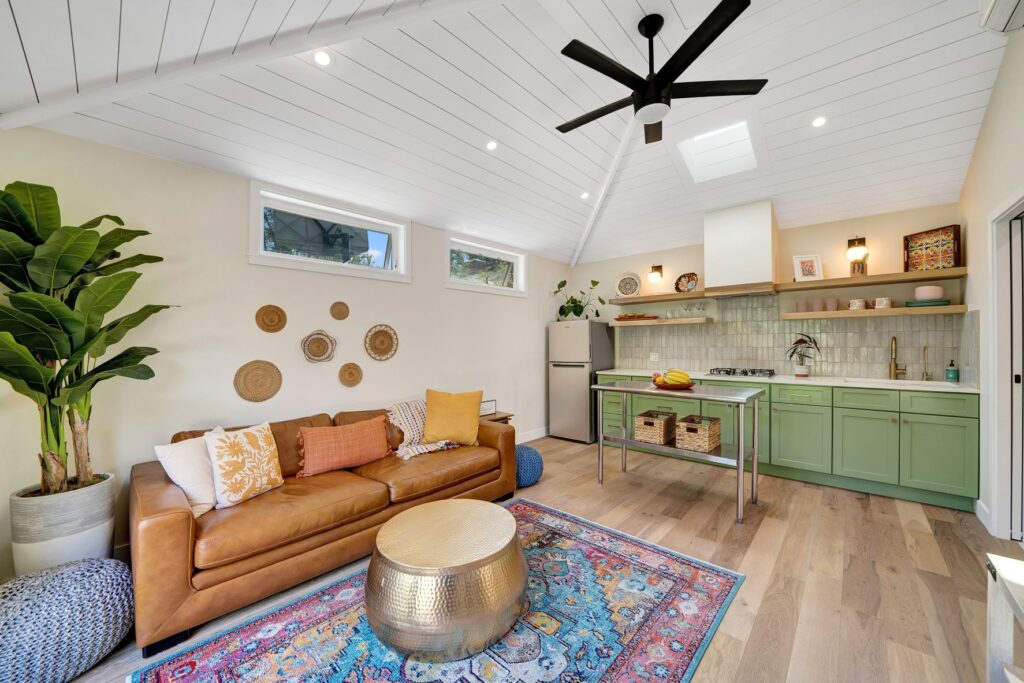In today’s dynamic economic environment, the utilization of available resources for generating supplementary income has become increasingly prevalent. The concept of transforming idle spaces within a residential property into revenue-generating units is no novelty.
One such underutilized space in many households is the garage. Garage conversion, a trend that has gained significant momentum over recent years, involves remodeling garages into habitable living quarters and subsequently renting them out.
This article delves into the multifaceted process of converting garages into rental units with an aim to provide comprehensive guidance on the subject matter. It discusses fundamental aspects ranging from planning and designing the living space to crucial legal and financial considerations that should be taken into account during this transformation process.
With a focus on practicality and knowledge-based advice, this piece serves as a valuable guide for individuals seeking innovative ways to optimize their spaces while fostering community engagement through providing affordable housing options in their neighborhoods.
Key Takeaways
– Proper planning and design are essential for creating a functional and appealing living space in a garage conversion.
– Incorporating versatile storage solutions can maximize space in a compact garage setting.
– Understanding and complying with local building codes, zoning laws, and regulations is crucial for a successful garage conversion.
– Careful budgeting and financial management are necessary to offset renovation and maintenance costs through rental income.
Planning and Designing the Living Space
In the process of transforming a garage into a rental unit, meticulous planning and designing of the living space is pivotal to ensure optimal functionality, comfort, and aesthetic appeal. This transition involves several considerations that should be carefully evaluated to make sure the outcome meets both legal requirements and tenants’ expectations.
It’s not merely about having four walls and a roof; the space should provide all necessary amenities for comfortable living. The design phase includes decisions on everything from floor plans to fixtures, ensuring each element aligns seamlessly with the intended purpose of the space.
Attention to detail during this stage could significantly enhance both tenant satisfaction and profitability. For instance, incorporating versatile storage solutions into the design can maximize useable space in a typically compact garage setting. Additionally, selecting durable materials for surfaces exposed to high wear would reduce maintenance costs over time. These strategic choices create an inviting environment that appeals to potential renters while also minimizing future expenses.
The designing phase also extends beyond the physical structure considering utilities such as plumbing, electrical wiring, insulation, ventilation systems among others- elements often overlooked but integral for habitability standards compliance besides improving the overall quality of life within these spaces. Additionally, taking steps towards energy-efficient designs like installing LED lighting or insulating windows can attract eco-conscious tenants while simultaneously reducing utility bills over time – creating win-win situations for both parties involved in these rental agreements without explicitly stating so at any point during discussions or negotiations regarding this conversion process.
Legal and Financial Considerations
Navigating the labyrinth of legal and financial considerations becomes a crucial factor when repurposing a previously non-residential area for tenancy purposes, similar to a ship captain charting their course through treacherous waters.
Data from the Department of Housing states that 58% of DIY landlords have faced legal issues due to lack of proper understanding and planning beforehand. This statistic underscores the importance of becoming conversant with local building codes, zoning laws, and other pertinent regulations prior to commencing any refurbishment work. Furthermore, it is advisable to seek professional advice on tax implications associated with rental income.
A comprehensive grasp of relevant property law can be instrumental in preventing potential disputes down the line. For instance, some jurisdictions stipulate that rental units must meet specific health and safety standards such as adequate ventilation, fire exits or installation of smoke alarms. Similarly, an understanding of tenant rights can forestall unnecessary conflicts; these may include guidelines around eviction procedures or terms for raising rent. Equally important are insurance matters; ensuring sufficient coverage not only protects one’s investment but also provides peace-of-mind.
Financially speaking, converting a garage into a rental unit requires careful budgeting and planning. Expenses extend beyond initial renovation costs and will likely include ongoing maintenance expenses and potentially higher property taxes once the unit is deemed habitable by local authorities. However, judicious financial management can offset these costs over time through steady rental income – making this venture both feasible and profitable for those willing to take informed risks in pursuit of additional revenue streams.
